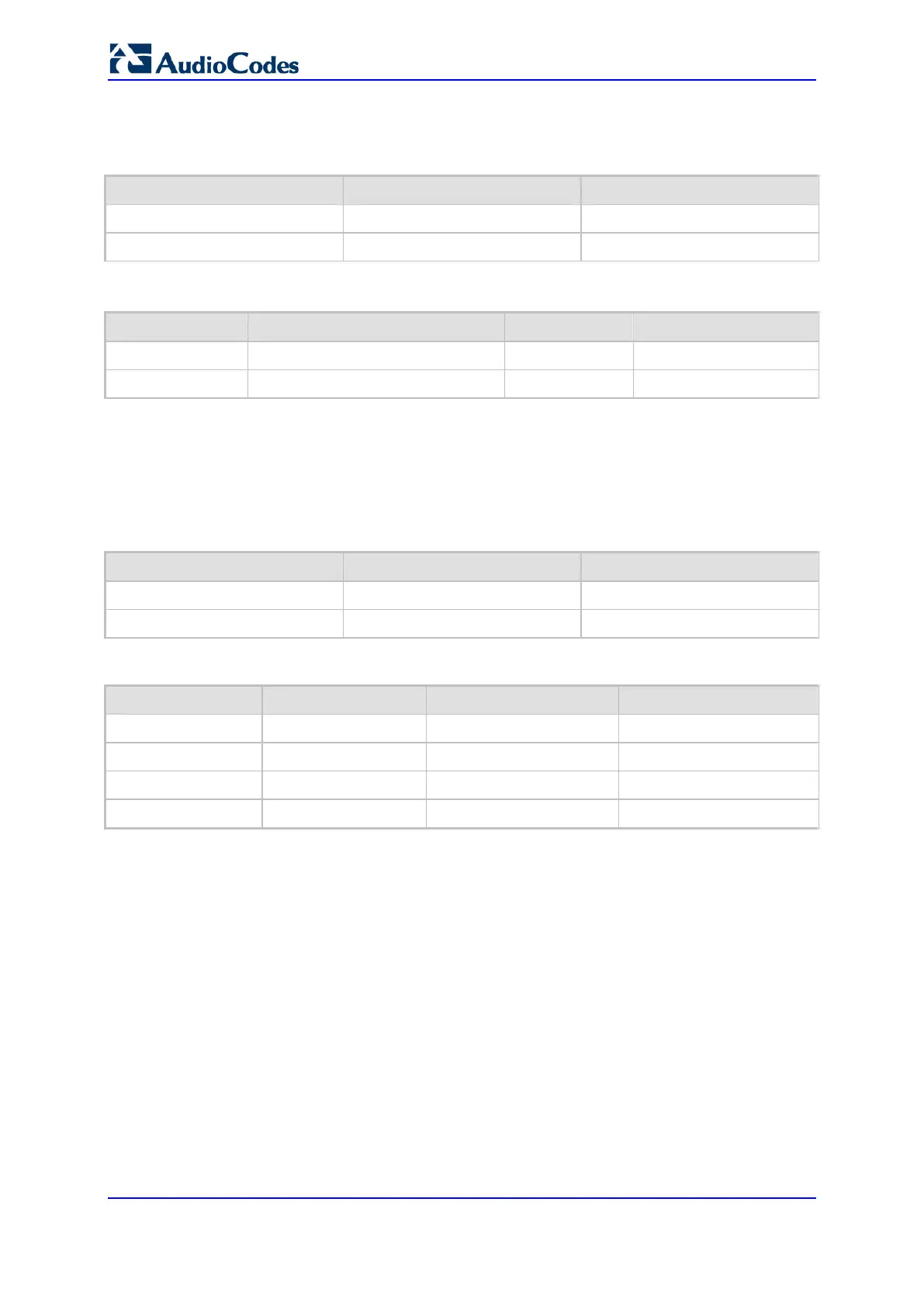User's Manual 250 Document #: LTRT-10466
Mediant 500L MSBR
Example 1: This example uses two different Cost Groups for routing local calls and
international calls:
Two Cost Groups are configured as shown below:
Cost Group Connection Cost Minute Cost
1. "Local Calls" 2 1
2. "International Calls" 6 3
The Cost Groups are assigned to routing rules for local and international calls:
Routing Index Dest Phone Prefix Destination IP Cost Group ID
1 2000 x.x.x.x 1 "Local Calls"
2 00 x.x.x.x 2 "International Calls"
Example 2: This example shows how the device determines the cheapest routing rule
in the Outbound IP Routing table:
The Default Cost parameter (global) in the Routing Rule Groups table is set to Min,
meaning that if the device locates other matching LCR routing rules (with Cost Groups
assigned), the routing rule without a Cost Group is considered the lowest cost route.
• The following Cost Groups are configured:
Cost Group Connection Cost Minute Cost
1. "A" 2 1
2. "B" 6 3
• The Cost Groups are assigned to routing rules:
Routing Index Dest Phone Prefix Destination IP Cost Group
1 201 x.x.x.x "A'
2 201 x.x.x.x "B"
3 201 x.x.x.x 0
4 201 x.x.x.x "B"
The device calculates the optimal route in the following index order: 3, 1, 2, and then
4, due to the following logic:
• Index 1 - Cost Group "A" has the lowest connection cost and minute cost
• Index 2 - Cost Group "B" takes precedence over Index 4 entry based on the first-
matched method rule
• Index 3 - no Cost Group is assigned, but as the Default Cost parameter is set to
Min, it is selected as the cheapest route
• Index 4 - Cost Group "B" is only second-matched rule (Index 1 is the first)

